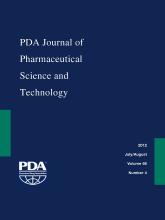Abstract
The aim of the present investigation was to improve the permeation of Atenolol by preparing a transdermal patch and using the method of iontophoresis. Influence of chemical penetration enhancers was also studied. Combination of iontophoresis and chemical penetration enhancer d-limonene and oleic acid produced satisfactory permeation and flux. The electrically driven penetration enhancement provided by this method has succeeded in overcoming the formidable barrier presented by the stratum corneum, and has shown to be a promising technique for the transport of hydrophilic drug Atenolol from polymeric films. Atenolol is a water-soluble, ionizable drug and suffers from poor bioavailability when given by oral route due to its incomplete intestinal absorption and first-pass metabolism. Being a BCS class III drug, Atenolol has low log P (0.23) value, which also may be the reason for its poor intestinal absorption. Iontophoretic delivery using Ag/AgCl electrodes with current density of 0.35 mA/cm2 enhances its delivery rate and thereby overcomes the problem of incomplete absorption. The prepared transdermal patches were subjected to ex vivo drug permeation studies using rat skin in phosphate buffer pH 7.4 for 24 h (passive and iontophoresis), and samples collected were analyzed by gradient high-pressure liquid chromatography. The column used was chiral alpha-glycoprotein (AGP) column (10 cm, particle size 5μ) and UV-detection at 225 nm was used. The effectiveness of permeation enhancers (d-Limonene and oleic acid) was determined by comparing drug flux in the presence and absence of each enhancer. Combination strategies of iontophoresis with chemical enhancers like oleic acid led to the significantly higher flux levels compared with passive transdermal delivery.
- © PDA, Inc. 2012
PDA members receive access to all articles published in the current year and previous volume year. Institutional subscribers received access to all content. Log in below to receive access to this article if you are either of these.
If you are neither or you are a PDA member trying to access an article outside of your membership license, then you must purchase access to this article (below). If you do not have a username or password for JPST, you will be required to create an account prior to purchasing.
Full issue PDFs are for PDA members only.
Note to pda.org users
The PDA and PDA bookstore websites (www.pda.org and www.pda.org/bookstore) are separate websites from the PDA JPST website. When you first join PDA, your initial UserID and Password are sent to HighWirePress to create your PDA JPST account. Subsequent UserrID and Password changes required at the PDA websites will not pass on to PDA JPST and vice versa. If you forget your PDA JPST UserID and/or Password, you can request help to retrieve UserID and reset Password below.






